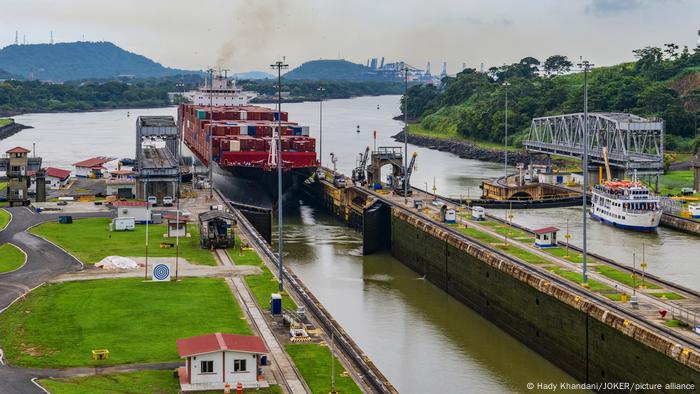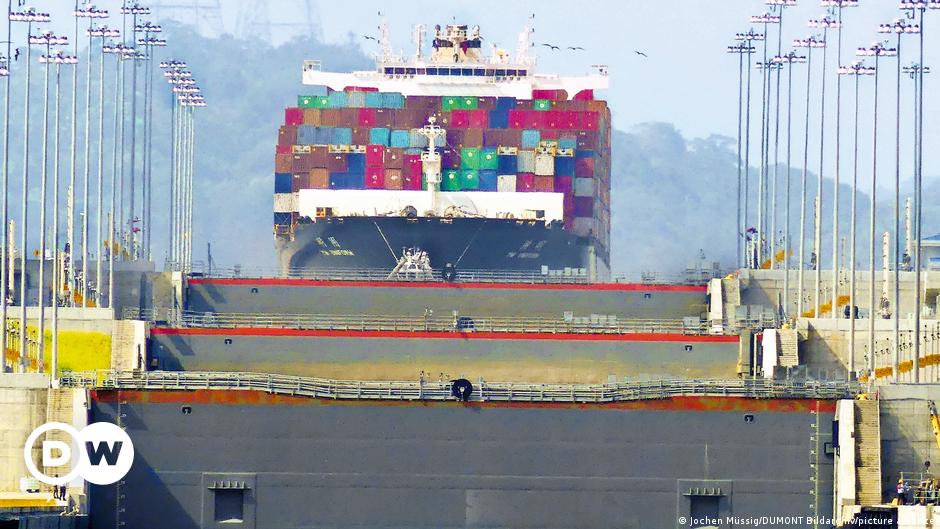The Panama Canal connects the Atlantic Ocean with the Pacific. The building is of great importance for shipping. Before the canal existed, a ship had to travel the much further and much more dangerous route around the southern tip of the American continent.
The sea at stormy Cape Horn has been a veritable ship graveyard for centuries. Thousands of sailors died here, countless ships were lost. The passage through the Channel in Central America shortened the route to the Pacific by more than 13,000 kilometers – a huge saving in money and time.
Now, however, residents, conservationists and meteorologists are observing as a result of the climate change a Decrease in rainfall in Central America. As millions of liters of freshwater from the region’s rainfall flow into the sea with every lock, the water level in the canal drops, making it increasingly difficult for ships with deep drafts to pass.
The Panama Canal – one of the most amazing hydraulic structures in the world – struggles with low water.
First Consequences
The Panama Canal uses so much fresh water because ships have to go up and down 80 feet in a dozen locks. According to the consulting firm Everstream, which monitors and evaluates supply chains on behalf of international corporations, for every ship passage through the canal there are around 200 million liters of water necessary.
The one responsible for the canal operation Panama Canal Authority has imposed strict draft restrictions on several occasions in recent months. It was initially 14 meters, but since Wednesday (May 24) it has only been 13.5 meters. Worse, however, the Everstream analysts do not expect the situation to ease, either in the short term or for the rest of the spring. The consequences for shipping would worsen.
Die ARD Tagesschau reported on the same day that Hapag-Lloyd and other shipping companies want to load fewer containers in order to reduce the draft of their ships. They then want to compensate for the loss of income with surcharges of around 500 euros per box. According to the same source, the President of the Wholesale and Foreign Trade Association, Hans-Fabian Kruse, warned of a massive disruption to supply chains and longer transport times – which will also affect prices.
No reason to panic?
Vincent Stamer takes a more relaxed view of this: “It won’t really be critical for the supply chains for the time being,” the economist from the Kiel Institute for the World Economy told DW. Unlike 2021, when the container ship Ever Given foundered in the Suez Canalsuch consequences are not to be expected now: “The Panama Canal is not of the same essential importance for the world economy as the Suez Canal.”
In addition, world trade, around 90 percent of which is transacted across the world‘s oceans, has demonstrated its relatively pronounced resilience in recent years: “After the multiple burdens caused by ship congestion, port closures and lockdowns in recent years, the Supply chains have recovered significantly.”
The consequences of climate change
It’s not the first time the Canal Authority has a low lack of water troubles. The year 2019 was already one of the driest years in history, the canal administration announced in January 2020 and stated at the time that climate change was “sufficiently proven at the Panama Canal.”
In Europe, too, low water levels have caused headaches for the authorities in recent years. So had about droughts the Rhine, which is important for inland navigation dry up, which drove up the price of gasoline and heating oil and hampered supplies to factories. Due to lack of snow in the Alps the problem of low Rhine levels is threatening again this year.
solutions sought
Water navigation authorities are considering for the Rhine appropriate countermeasures. This includes further dredging of the fairways. Another, much more expensive solution would be to build barrages. This could be used to dam the river in sections in order to raise the level.
Other solutions are being considered for the Panama Canal. This includes water-saving sluices that collect the precious freshwater in extra basins so that it can be reused. To this end, possibilities are being examined to develop other sources in the catchment area of the canal, such as underground sources. The construction of reservoirs and seawater desalination plants is also being considered.

A container ship drives into the Miraflores lock – it forms the access to the canal on the Pacific side
Many diversions are conceivable
If these measures came too late and passage through the canal became uneconomical, would Europe be threatened with something similar to the Suez Canal closure? “No, definitely not,” Vincent Stamer is certain: “Only two percent of German seaborne trade goes to the Pacific coast of the American continents. The sea connections to the east coast of the USA and trade with neighboring European countries on the road play a much larger role Role.”
Until then, the Kiel economist sees other ways of reacting to the water shortage in Central America: “Reducing the load is certainly the easiest way for shipping companies. The use of smaller ships is also possible.”
Stamer also sees large-scale and, at first glance, exotic-looking alternatives: “The transport route from Asia through the Panama Canal to the US east coast can be partially reallocated to the Suez Canal route. Alternatives are less established on the route between Europe and the US West Coast. A combination of the above measures with a higher use of air transport or land transport by the USA is conceivable.”
